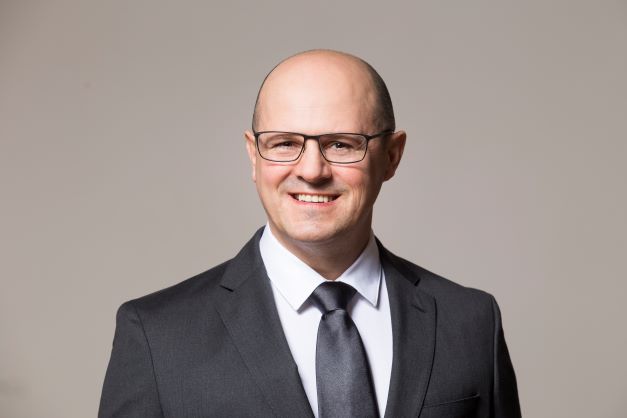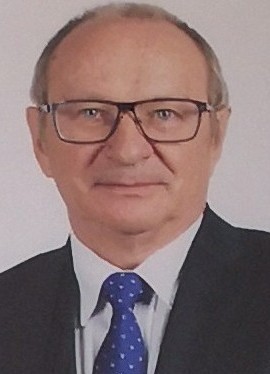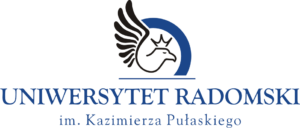Uniwersytet Radomski
im. Kazimierza Pułaskiego
7th International Congress On Technical Diagnostics
14th - 16th September 2022
Radom - POLAND
Get to know us
7th International Congress on Technical Diagnostics
7th ICTD is scheduled from 14-16 September 2022 in Radom – POLAND. This congress will be held, as before, at Kazimierz Pulaski University of Technology and Humanities under the patronage of the Polish Society of Technical Diagnostics. It is an honour and privilege to invite you to participate in this event.
ICTD is an international refereed congress organized cyclically in Poland, every four years dedicated to the advancement of the theory and practices in technical diagnostics. The idea of the congress is to provide an international platform to all the world industrial partners and researchers to share ideas and latest concepts on the diagnostics of machines, vehicles, constructions, materials and industrial processes and maintenance of all kinds of technical facilities. The congress will be an opportunity to highlight the digital transformation in the Industry 4.0 age.

Keynote Speakers

Professor Tomasz Krysiński
Airbus Helicopters
Research and Innovation Director
Professor Tomasz Krysinski re-joined Airbus Helicopters as Vice-President Research and Innovation in May 2014. In his role, he contributes to the definition and the cascading fo the company strategy & objectives, communicate and translate these into a clear set of implementation activities; ensure their successful delivery across the company.
From 2011 to May 2014 Mr. Krysinski was in charge of the innovation laboratory at PSA Peugeot Citroën.
Tomasz Krysinski joined Aérospatiale (which later became Eurocopter and then Airbus Helicopters) as an aerodynamics engineer in 1986, and was involved in the development of most of their helicopter product range, including the hybrid high-speed demonstrator X3, as Chief Engineer, and the combat helicopter Tiger. Mr Krysinski who was born in Lodz in Poland holds a Master of Engineering from the Ecole Nationale Supérieure d’Arts et Métiers (ENSAM) Paris and the Ecole Nationale Supérieure des Pétroles et des Moteurs (IFP) as well as a Master of Science in Energy Processes from Université Paris VI.
“Advanced Diagnostics in Aviation”
The technical evolution in aerospace engineering is moving at an incredible pace. A constant flow of innovations allows more and more problems to be overcome and removes barriers which, not long ago, seemed to be insurmountable. The main drivers of this race are always cost and safety. In the last decade the progress seems to have even accelerated, thanks to the deployment in aviation of new technologies such as hybridization, LIDARs, RADARs, cameras etc. The cost of this innovation is complexity: in case of wear or malfunctions, the diagnostics and repair becomes incredibly expensive. Artificial intelligence is a possible solution. It can help and, sometimes, even relieve humans in diagnostics. However, one should never forget that a modern diagnosis system, no matter how advanced, is just the cure, thus it must be supported by a robust design that can prevent the entire problem. A practical case of AI use in diagnostics and design optimization will be presented.

Professor Wiesław Jerzy Staszewski
AGH University of Science and Technology in Krakow
Dr Wieslaw J. Staszewski is a Professor of Mechanical Engineering in the Department of Robotics and Mechatronics at the AGH University of Science and Technology in Krakow, Poland. He received the B.Sc. and M.Sc. degrees in Mechanical Engineering from the Technical University of Poznań, Poland, in 1985 and 1986, respectively, and a Ph.D. in Mechanical Engineering from the Victoria University of Manchester, UK, in 1994. He worked for three years in the Technical University of Poznan, Poland. He then spent six years, including eighteen months British Council Fellowship at the Victoria University of Manchester, UK. In 1995 he joined the Deaprtment of Mechanical Engineering at the University of Sheffield, UK, where he was promoted to a Personal Chair in 2005. He joined the AGH University of Science and Technology in Krakow in September 2011.
Prof. Staszewski has experience of research collaborative projects both in the UK and Europe, working with industrial partners and academia. His research interest includes topics related to structural dynamics, structural health monitoring, condition monitoring and smart structures/materials. He is the author of over 500 research publications, predominantly in the damage detection and advanced signal processing areas. This includes 22 book contributions and over 180 refereed journal papers. Prof. Staszewski is the Associate Editor of five international journals, including Smart Materials and Structures, Structural Health Monitoring and Structural
Control and Health Monitoring. He has been involved in organisation of a number of international conferences and invited to present seminars, lectures, conference keynote addresses in the UK, Europe, USA and Asia.
“In-direct Operational Data Analysis for Health and Condition Monitoring
of Engineering Structures and Machines”
Structural damage/fault detection under variable and operational conditions is one of the major challenges in maintenance and monitoring of modern infrastructure and engineering machinery. Recent research developments demonstrate that operational data from such structures and machines – that are already available to end-user – can be successfully used to tackle this difficult problem. A number of in-direct applications will be presented to show how operational data can be used in-directly to monitor potential aircraft structural damage, detect aircraft hard landing events, detect faults and monitor abnormal operational conditions in wind turbines, detect structural damage due to earthquakes. The research work presented will involve the application of machine learning and co-integration analysis of non-stationary operational data. The major advantage of the methods presented is that no additional sensors, monitoring and expensive hardware is needed to maintain important and critical structures/machines.

Artur Pollak
APA Group
President of the Management Board
Artur Pollak, President of the Management Board of APA Group, Member of the Programme Council of the Faculty of Electrical Engineering of the Silesian University of Technology and Member of the Management Board of the Polish-German Chamber of Commerce and Industry, as well as Member of the Management Board of the Polish Green Construction Association. Member of the Council of the Katowice Lodge of the Business Center Club. Co-founder of the Silesian IoT Cluster SINOTAIC (www.sinotaic.com). Expert in computer control systems. He has led several projects, creating factories termed Industry 4.0 in Europe and China. Creator of the ultramodern technology showroom in Gliwice APA Black House (www.apasmart.pl). Among the clients are such giants of the world industry as: VW, Eisenmann, FIAT, OPEL, 3M, MAN, Amazon, DB Schenker, Tesla, or prestigious technical universities.
“Prediction of energy consumption in the Industry 4.0 platform”
For a long time, scientific and technical work has been focused on production management, which affects both the correctness of the process and the costs generated. One of the integral elements of the production process management is energy, which has an impact on the organization of work, operation of machines and production. Predicting the energy consumption of smart facilities is crucial for implementing energy-efficient management systems, the area of this problem is a key aspect of smart grids whereby loads must be planned in real time. The one of main tasks of intelligent systems is to optimize energy demand and costs to maximize the energy efficiency of the facility. According to the forecasting requirements the following article presents several approaches and predicting energy consumption models for production engineering systems. The proposed models were adopted and analyzed in terms of their usability and were trained and validated with the use of real data collected from the electrical installation in one of the companies, which use the APA IPOE system.
Plenary Speakers

Professor Wojciech Batko
AGH University of Science and Technology in Krakow
Professor Wojciech Batko – a specialist in the field of acoustic engineering, dynamics in technical systems, vibroacoustics, metrology, and related issues of technical diagnostics. Author of over 400 publications in Poland and abroad, which include authorship or co-authorship: 12 monographs, 26 chapters in books, 136 articles in international and national journals, 12 patents and over 220 conference papers. Among the numerous published papers, attention should be paid to proprietary solutions dedicated to the problem of building predictive algorithms in technical diagnostics derived from adaptive techniques of modelling the trend of changes in monitored diagnostic signals, as well as the theory of optimal filtration and prediction of monitored signals described by stochastic differential equations. They were presented in the monographs: “Synthesis methods of predictive diagnoses in technical diagnostics”, “Estimation of disturbances in monitoring systems”, and “Nonlinear effects in technical diagnostics”. Furthermore, he developed the problem of identifying the models of environmental acoustic hazards in non-Euclidean metric space, which he conditioned with the appropriately recognized phenomena: algebra, comparison metrics and solutions for estimating their uncertainty based on non-classical statistical methods.
Author and executor of numerous research projects. As a result of their implementation, several innovative technical solutions were created, which have found many implementations, e.g. construction of: a noise monitoring network in the city of Kielce, a mobile, integrated continuous noise monitoring station, innovative measurement solutions for acoustic research laboratories ensuring the automation of acoustic measurements, or a system for remote diagnostics of the excavator’s condition at the Brown Coal Mine in Konin. Educator of many talents in technical diagnostics and acoustic engineering, of which 16 obtained the PhD degree and 6 PhD habilitation. A long-time member of the Committee for Machine Building of the Polish Academy of Sciences, the Committee of Acoustics of the Polish Academy of Sciences, the Academy of Engineering in Poland, and the Council of the Łukasiewicz Research Network of the Institute of Mechanization of Construction and Rock Materials. Winner of numerous awards, decals of the Minister of Science and Higher Education, and Medals of the National Education Commission, Prof. H. Czeczota AGH for achievements in the mining field, Prof. W. Takliński AGH for teaching achievements, prof. I. Malecki awarded by the Polish Society of Acoustics, prof. S.Ziemba awarded by SE KBM PAN, as well as the Jubilee Medals of the Institute of Fluid-Flow Machinery of the Polish Academy of Sciences, AGH and the Faculty of Transport of the Silesian University of Technology.
Member of the Editorial Boards of the quarterly: Archives of Acoustics, Acta Mechanica et Automatica, Mechanics and the Editorial Board of the AGH University of Science and Technology Problems in Mechanical Engineering and Robotics.
He was honoured with the national designations: the Silver Cross of Service (1985) and the Crosses of the Order of Polonia Restituta: Knight (2002) and Officer (2013).
“Uncertainty of control assessments in machine diagnostic monitoring processes” Wojciech Batko
The work is dedicated to the problem of measuring uncertainty in the process of monitoring the condition of machines. Attention was paid to the problem of estimating the uncertainty of type A, in a situation where the monitored control result is described by a non-linear function of the measured parameter. The study highlights the simplification present in the existing solutions – not having a broader justification in diagnostic practice – which reduces the calculation problem of uncertainty to the classic rules for assessing type A uncertainty. In particular, for estimating the uncertainty of the monitored control result, on the basis of a random sample made of their calculated values, which means that the non-linear mechanism generating the results of the control assessment is omitted. The possible consequences of such a computational approach to uncertainty were discussed, both in terms of its computational values and its potential limitations affecting the credibility of the obtained result.
Proposed solutions are outlined, free from the limitations of the existing solutions. It was related to the linearization process of the problem under consideration using the “delta method”. On its basis, a new computational approach was derived to estimate the uncertainty of a monitored symptom in machine condition diagnostics, and the effectiveness of the proposed solution was assessed.
The proposal presented in the article is illustrated with an example of the assessment of uncertainty in the diagnosis of the vibration state of bearing nodes. It gives a more complete diagnosis of the state of the controlled object, enriching the base of the existing procedures for estimating the uncertainty of diagnostic assessments

Professor Zbigniew Dąbrowski
Warsaw University of Technology
Professor Zbigniew Dąbrowski, Ph. D., D. Sc, full professor of WUT, born in 1947, Head of Machines Design and Eksploatation in the Faculty of Automotive and Construction Machinery Engineering, Warsaw University of Technology, author of more than 300 papers, including 16 books. Co-organiser and a long-term Manager of the first modern Vibroacoustics Laboratory at WUT. Field of research: machine dynamics, vibroacoustics and technical diagnostics. Vibroacoustics Section of teh Acoustics Committee of the Polish Academy of Sciences. Ordinary member of AIP (Academy of Engineering in Poland).
“Application of vibroacoustic diagnostic methods to nonlinear systems in medicine” Zbigniew Dąbrowski, Jacek Dziurdź, Adam Piłka
Machine vibroacoustics diagnostics has developed a lot in recent years. The main reason is the great progress in measurement techniques and signal analysis. In the latter case, the development of practical methods for the analysis of nonlinear systems is a considerable help, and especially the ability to assess the degree of change of nonlinear disturbances with the increase of damage.
The developments presented are so significant and the results so certain that an attempt can be made to apply the methods used in the technique to much more complex biological systems.
The authors addressed the issue of increasing the effectiveness of the Auditory brainstem responses (ABR) method based on auditory brainstem evoked potentials in response to acoustic stimulation. This method consists in subjecting the patient’s hearing (stimulation) to signals of different intensity levels (the so-called intensity series). The response of the system is contained in the EEG signal (electroencephalography), which allows biological brain activity to be recorded. One of the components of this signal is the so-called “Wave V” (one of several identified brain waves), which indicates that a stimulation-induced signal reaches the cerebral cortex. Tests of this type are used to determine the hearing threshold and the type and degree of hearing impairment.
From the signal analysis point of view, it is the study of the transmittance of a strongly nonlinear transducer in an environment perturbed by a significant noise component. After analysing dozens of applied approaches (from the 1970s to the present) and performing a large series of empirical tests, several algorithms based on correlation analysis using, among others, the Gaussian function as a reference signal were proposed. A high conformity of the results with the specialists’ assessment was obtained.

Professor Jan Kiciński
Institute of Fluid- Flow Machinery, PAS Director
Professor Jan Kiciński, D.Sc., Eng. Corresponding Member of the Polish Academy of Sciences, Director of the Institute of Fluid- Flow Machinery, Head of the Distributed Energy Department, Doctor Honoris Causa of University of Warmia and Mazury in Olsztyn.
Most significant achievements: 1 – Developing ideas and implementation of new technologies for small-scale and distributed power generation, including especially CHP – ORC technologies intended for the municipal Autonomous Energy Regions. Awards obtained in this area: Prime Minister’s Award of First Degree for the scientific and technical developments, “Forbes Diamonds”, “Business Gazelle” and “Quality of the Year 2013” (in the Science category). 2 – Developing ideas and implementation of technologies for model agro-energy complexes, new solutions for the micro- turbine being the component of the Domestic CHP Power Plant. Awards and achievements in this area: National Energy Globe Award, (the most prestigious, internationally recognized environmental award obtained in the contest conducted under patronage of UNESCO in cooperation of UNEP), successful candidate in the APOLLO Statuette competition, awarded for his outstanding contributions to RES and Eco-Energy development, successful candidate in the Green Phoenix Statuette competition, awarded for his scientific achievements in the field of eco-energetics, SIEMENS Research Award, authorship of internationally recognized monograph: J. Kiciński, Rotordynamics and J. Kiciński, P. Chaja, Climate Change, Human Impact and Green Energy Transformation, Springer.
“A slightly different perspective on technical diagnostics in the power industry” Jan Kiciński
Traditional technical diagnostics regarding, for example, machines and energy technologies allows us to determine the technical condition of these machines and to detect possible failures. This is important from an operational and safety point of view, especially with regard to the risk to human life in the case of critical machines.
But does this exhaust all the possibilities of using the research tools and methodologies known in traditional technical diagnostics? While remaining within the broad field of power engineering and focusing on eco-energy, distributed power generation, prosumer-generated energy or energy for rural areas, we can easily see the need to assess the safety of these small installations as well as their efficiency and profitability. This applies in particular to community energy mapping, the use of available hybrid technologies and, finally, public acceptance.
Therefore, it is worth looking at technical diagnostics from a slightly broader perspective.

Professor Stanisław Radkowski
Warsaw University of Technology
Professor Stanislaw Radkowski, known and appreciated on an international scale, deals with the issues of machine operation. He has strengthened his scientific position through numerous publications, projects, patents, and monographic studies, which were the basis for obtaining further scientific degrees and the title of professor.
He included many original and new cognitive methods in the technical diagnostics of machines and vibroacoustics. His search and the obtained original research results were focused on: considering various classes of dynamic working machinery that are important in terms of cognition and application, allowing for the specification of the impact of their constructional features, as well as the degradation changes taking place during the exploitation process on their dynamic properties. They provided the basis for formulating solutions to the problem of identifying the sources of machine noise. He has interesting results in developing procedures for diagnosing the early stages of damage development. They made it possible to shape their desired dynamic characteristics, influencing the reliability of the operated systems and the vibroacoustic safety of their environment. It is to consider the publication as an example of the transfer of the scientific and research results presented for the construction of innovative scientific and technological solutions in industrial practice.
Professor was related to the period of his co-creation of the Vibroacoustic Laboratory of the Faculty of Automotive and Construction Machinery Engineering (SiMR) at the Warsaw University of Technology and the organization of the Integrated Environmental Laboratory of Mechatronic Systems for Vehicles and Construction Machinery. His and his team’s scientific and research successes contributed to the introduction of several changes in teaching programs, including new fields of study: Mechatronics, Engineering of Electric and Hybrid Vehicles. His scientific and didactic achievements were closely related to the creation of research and teaching teams, including the promotion of 12 PhDs in technical sciences, four of whom, after obtaining the degree of habilitated doctor, took up the positions of university professors. He chaired the organizational work of the Congress of Technical Diagnostics, two World Congresses of Polish Engineers for two consecutive terms, chaired the Main Board of the Polish Society of Technical Diagnostics, and was Dean of two terms of the Faculty of Automobiles and Working Machines of the Warsaw University of Technology, currently, he is the chairman of the Scientific Council of the National Museum of Technology.
“Detection of damage early stages development in dynamical systems” Stanisław Radkowski, Jędrzej Mączak
One of the important problems that must be taken into account by the designer. of machines and devices is solving issues related to the process of formation and development of early stages of damage, and above all those arising as a result of material fatigue processes. Early detection of damage allows you to avoid the degradation of the product, in particular failure of technical systems and the related consequences in the form of material and non-material losses, and is the basis for making an optimal decision in time allowing rational corrective or repair actions. Modeling, simulation and testing of system parameters changes as a function of damage development allows for the assessment of the impact of degradation and fatigue processes, taking into account the influence of temperature on the evolution of load distribution and kinematic and dynamic properties of technical objects, as well as the detection and identification of qualitative changes in their technical condition.
Taking up these issues requires both the detection of changes taking place in the utility signals, but also in the control and accompanying signals, including vibroacoustic signals. This especially applies to mechatronic systems, which constitute an important part of the research and development topics of the team. The paper presents a wide spectrum of works in this area, taking into account the phenomena of qualitative changes in vibroacoustic signals, problems of using damage-oriented changes in control signals and their dependence on changes in the parameters of the analyzed systems.
An important feature of the presented approach is the focus on qualitative changes of the analyzed signals, which can be used for the analysis of individual changes and qualitative diagnostics, without the need to refer to historical data.

Professor Tadeusz Uhl
AGH University of Science and Technology Space Technology Center Director
“The diagnostics of structures vs. space technologies” Tadeusz Uhl, Agata Kołodziejczyk
Space Technology Center of University of Science and Technology AGH
There to aspects of diagnostics of structures in space technology, first one is related to applications of new space technology in diagnostics of structures on Earth, mainly civil structures, but the second are issues related to diagnostics of space appliances which are operating on orbit or planets. For cases of civil structures monitoring the remote sensing techniques, which are currently well established for earth observations are increasing their resolution and capabilities of detailed description of changes in the configuration of the surface based on data collected by the satellite constellations. The SAR satellite technique which give enough good resolution are very promising in practical applications. These techniques can be applied for bridge, building, dams monitoring. Some examples will be presented in the paper. There is a limited access to satellites operating on orbit or landers operating on planets for their maintenance and service. Nowadays, satellites with installed robots for maintenance purpose are under design and testing. These satellites are dedicated for well define service tasks but not for general applications. To design and implementation of such robots the knowledge on location and dimension of damage under service is strongly required. The modern solution of satellite critical components are based on two assumptions; first one is based on prescriptive approach to maintenance but the second one is based on redundancy or implementation based on self-healing materials. Both approaches will be discuss in the paper, but, a new idea of bioinspired self – healing material will show.
Congress History
The previous editions of the International Congress on Technical Diagnostics have been organized by:
- Silesian University of Technology – Gliwice 2016,
- AGH University of Science and Technology – Kraków 2012,
- University of Warmia and Mazury – Olsztyn 2008,
- Poznan University of Technology – Poznań 2004,
- Warsaw University of Technology – Warszawa 2000,
- Institute of Fluid-Flow Machinery, PAS; Silesian University of Technology; Poznan University of Technology – Gdańsk 1996.
Contact
Organizers
Additional information can be obtained from: Organizational Committee Secretary
Address
ul. Stasieckiego 54, 26-600 Radom, Poland
Contact
tel.: +48 48 361 71 16
e-mai: ictd2022@uthrad.pl


